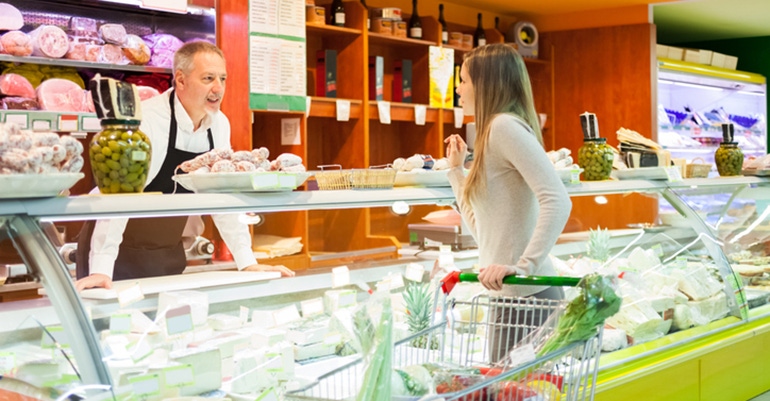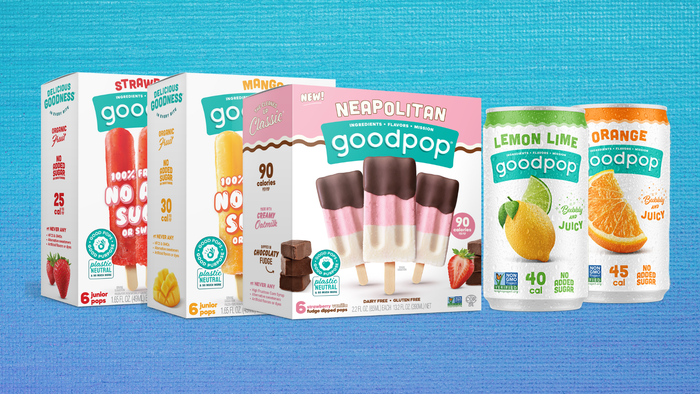Optimize your fresh prepared offerings
The deli department—and fresh prepared food in particular—has the potential to drive more growth if stores can boost its reputation among shoppers and cater more specifically to their needs.
December 5, 2016

As the grocery industry continues to struggle to sustain and boost in-store total sales, it needs to better capitalize on the existing bright spots that offer promise for growth. For many retailers, fresh prepared food is one of those bright spots.
The Food Marketing Institute, with the support of Nielsen, has just published its first version of The Power of Fresh Prepared/Deli 2016, a report it plans to publish annually to track consumer preferences in this rapidly changing category. Here are the report’s key takeaways for how retailers can optimize their fresh-prepared offerings.
Establish a strong reputation for fresh in-store offerings
While many shoppers choose a primary store based on the meat and produce selection they know they’ll find at the store, few take deli and fresh prepared into account. By boosting the profile of the deli counter and making fresh offerings a point of differentiation, retailers can draw in new customers and find dramatic growth.
Retailers should remind customers that prepared food is not just about the convenience of not having to cook, but that they’ll also spend less time having to plan meals and shopping lists, preparing ingredients and cleaning up the mess afterward. There’s also potentially less waste involved, since customers don’t have to buy special ingredients and can customize the quantities they buy.
Boost the prominence of the fresh prepared counter in consumers’ minds
It’s crucial to get customers familiar with the fresh options available to them. Most shoppers learn about a retailer’s prepared foods program by seeing or trying it for themselves in-store, so offering samples, promotions or special displays are key to drawing people to the deli counter. Eye-catching signage is second-most important. Appropriate outreach is also key: overall, customers prefer email as a means for getting messages about "tonight’s fresh prepared dinner." Younger shoppers tend to prefer digital media generally, including email but also social media and apps, while circulars remain important for older generations. Targeted messaging is key to engaging customers and getting them to think about the deli counter as a viable and attractive restaurant alternative.
Make it appealing to shop fresh prepared
A key driver to fresh prepared is the focus on speed: retailers can streamline deli operations by offering separate checkout lines, click-and-collect options or kiosk-ordering, in addition to generally ensuring that orders are easy to place and quick to fulfill. Because the focus on speed is also likely to deter customers from shopping the rest of the store, placing some convenience or grab-and-go offerings near the deli or fresh counter may provide an additional boost.
Variety is also crucial, in the number of items and the types of cuisines offered as well as from day to day—meaning regular rotation is a good idea, and daily meal specials and seasonal items may be appealing to consumer as well. Providing healthy, nutritious items will be important for some, since one drawback in fresh prepared for some customers is that they view home-cooked meals as more nutritious. Another notable feature for shoppers is to have chef-prepared or chef-inspired meals, which is an area that retailers can capitalize on by branding their prepared foods program and employing recognizable, friendly and knowledgeable staff in the department.
Finally, the deli counter does not escape the universal trends toward organic and locally sourced foods. Catering to consumer interests that are priorities in other parts of the store will serve a retailer’s fresh prepared department well—to be able to offer organic options but also to present consistent images and stories across the entire store.
Align options with intended store audience
It’s important to develop a sense of the demographics and priorities of the people who frequent a particular store, as well as to analyze shopping patterns at different times of the day. Freshly prepared meals that are prepackaged for heating and eating appeal to shoppers who are focused on speed, while meal kits are a draw for consumers who value speed as well as meal preparation, and are not as focused on cost savings. Type of cuisine is another factor to consider: American, Italian, Mexican, Chinese and salad options all have the broadest appeal, but millennials and younger shoppers have demonstrated great interest in more diverse cuisines such as Japanese, Thai, Vietnamese, Indian, Middle Eastern and Korean. Younger shoppers are generally also more likely to eat out spontaneously on weekdays than older generations—an important trend to keep in mind when planning offerings for a given day.
Build on existing momentum
Shoppers who already buy fresh prepared food during lunchtime—and urban stores should note this is a strong advantage for them, with urban shoppers twice as likely to frequent a grocery store for deli or fresh-prepared lunches—are a good target for fresh prepared dinner options as well. There’s also a lot of overlap between shoppers who go for fresh prepared foods and those interested in meal kits, so stores can strategize ways for these sectors to complement or build on each other. Finally, single customers tend to prioritize convenience and savings, while households of four or more people stress meal variety and value—another way in which a store that knows its consumer base will be better able to optimize its fresh options.
The bottom line is that it’s important for retailers to analyze their consumers’ habits and preferences, and cater to them—prioritizing younger shoppers who will drive future growth—while offering convenient meal solutions through a "daily deli deals" type of program. And above all, dedicate the space and energy to become a fresh foods destination.
About the Author(s)
You May Also Like




